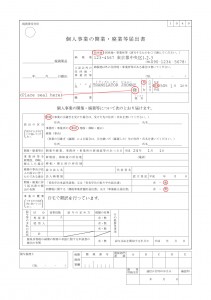There are a few different ways a client might ask for a translation to be delivered; ベタ打ち (betauchi) is one of them. ベタ打ち basically means to type your translation (usually in MS Word) more or less exactly the same as it appears in the source document. This method is only used when the source document is a picture, un-copy-able PDF, or other document format from which the source text cannot simply be copy and pasted (if you have an editable Word file as your source document, for example, you can just write your translation right over the original text, or below it). For example, if a title in the source document is centered and in bold, your translation of that title will be centered and in bold as well.
Where it gets tricky is when you have diagrams and other non-linear forms of text. One way to handle this would be to paste a copy of an image of the diagram in your Word document and place text boxes over the areas to be translated. Text boxes are messy, however, and due to spacing issues and text size, this isn’t always a viable option. I prefer to make a table and try to orient the translations so their relationship to each other approximates how they appear in the original. Sometimes, however, this is just not possible, or at least not practical – there are so many bits of text in so many odd positions in a diagram that even if you turned them into a table, a monolingual editor looking at it will have no idea what’s supposed to go where. In these cases you have to bend the rules a bit. I usually just create a two-columned dictionary table, with each phrase or term from the original document typed on the left and their translation typed on the right. If I’m feeling particularly ambitious or just typing the terms seems insufficient (for example when the same term appears twice or more in the same diagram but, due to context, each instance has to be translated differently), I’ll cut out an image of that term and paste it into the left hand column instead (the Snapshot tool in the free PDF editor PDF-XChange Viewer is a lifesaver here).




